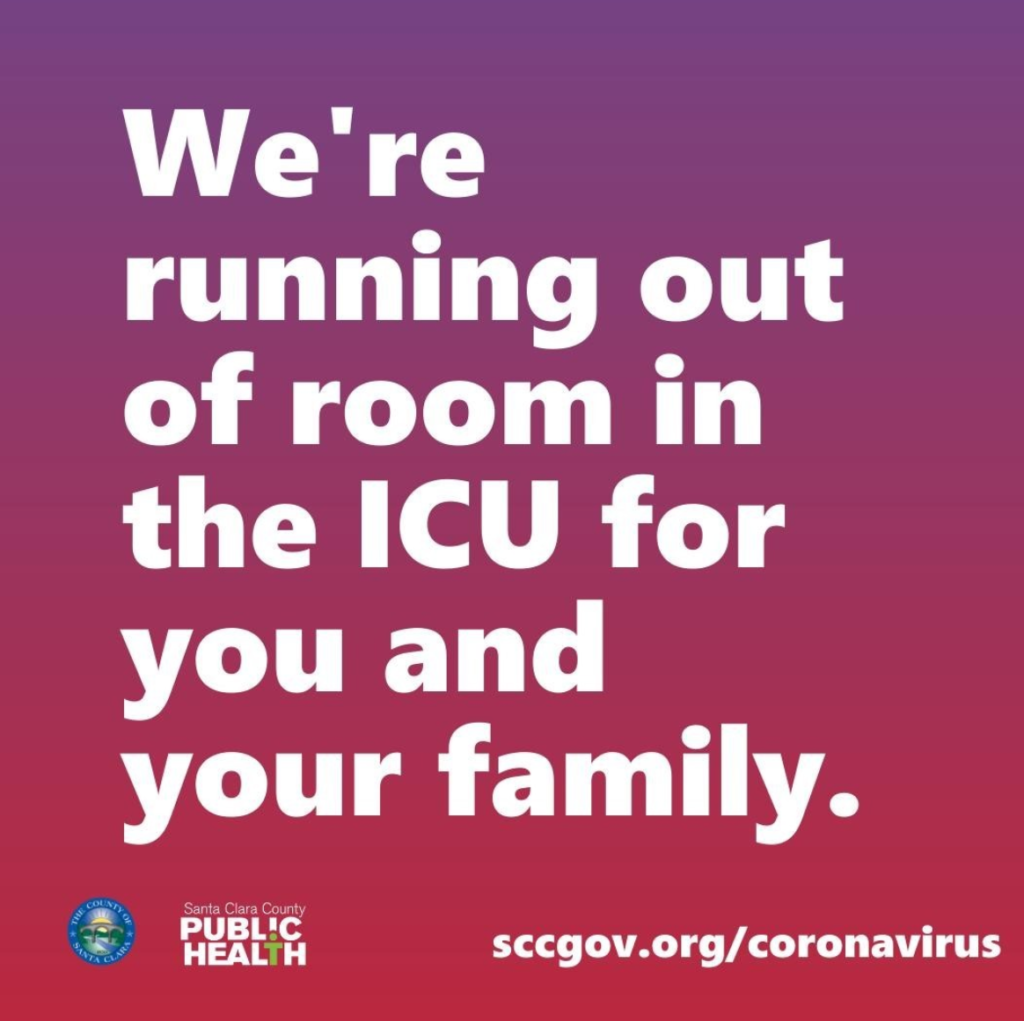COVID, week 39 + how do we get people to care
Well.
Predictably, SCC and the surrounding Bay Area counties added further restrictions to the Governor’s initial guidelines after I posted last week; just call me Sylvia. As of this morning, the ICU at Regional — (presumably) the same ICU where I spent a week after my subarachnoid hemorrhagic stroke — is full, with 66 COVID patients.
It’s important to remember that Regional’s also the only county-designated Level II Trauma Center on this side of town. When (not if) community members have to be hospitalized for whatever — COVID, heart attacks, strokes, bad car accidents, gunshot wounds — presumably they’ll have to go elsewhere instead and/or may end up getting sub-standard care. People often quote that not many people die because of COVID (today we surpassed the 3k+ COVID deaths mark — a new record — but I guess that’s not enough?), but we fail to acknowledge all the others who are dying because there’s not enough care to go around in a pandemic.

I read an interesting column the other day in the NYT, from a physician author, about the need to reorient our collective COVID messaging so that people — people who don’t really “get it” right now — will really begin to understand the ramifications of this virus and ultimately (hopefully!) change their behaviors. She argues that our Mr. Rogers-esque “do the right thing because it’s the right thing” messaging so far hasn’t moved the needle for so many people because, well, it’s too kind.
Instead, she argues that we should go for the more disturbing, in-your-face messaging, like some of the anti-smoking videos that we all saw growing up that featured former smokers (remember those?). The author links to a COVID warning video from the State of California, hosted on the City of Cupertino’s page, that’s eerie as hell, particularly once you realize what’s going on. Maybe it’s a step in the right direction, but maybe more is warranted.
It feels like a bit of an impossible ask: how do you get people to care? How differently can you package the same information to get people to change their minds, to change their behaviors, to give a damn about something that may potentially kill or very badly hurt themselves, someone they know, or other humans? (It’s a bit of a thought experiment as well; what would you do if you had to make these decisions?).

Also in the last week, the governor announced that CANotify would go live, statewide, on 12/10; it’s the state’s opt-in exposure notification system that would serve as yet another layer in COVID prevention efforts. If you haven’t yet heard or read about the “Swiss cheese model” of pandemic defense, I’d recommend it, and then you could see how opting-in to a notification system — in addition to doing everything else that we should be doing — can help. “I don’t want more notifications on my phone” — yes, but.
But all of this ultimately goes back to one central question — one that has near-ecumnenical applicability to various aspects of our lives, over and above pandemic spread prevention: how do you get people to care?
By now, I mean, we surely know that having massive, indoor house parties is all but promised to fuel the virus’s spread, but people do it anyway.
We know that we should exercise, that we should move our bodies in meaningful, intentional ways, more days each week than not, but people still don’t do it as often as they should, if they do at all.
We know that we should eat whole grains, fruits, and vegetables on a daily basis more than we do, but most of us don’t eat as healthily as we know we ought to, even if our doctors have said our health is on the line.
Surely this is sounding familiar. If knowledge is power, what do we do when people gleefully ignore said knowledge because it’s inconvenient?
It’s beyond bizarre to me that nearly forty weeks into this pandemic — the length of a full-term pregnancy!! — we are still having this conversation and that public health officials, scientists, medical professionals, and COVID-19 survivors are still pleading with people to take it seriously.
If everything we’ve done up to this point hasn’t worked, seriously: which options remain?